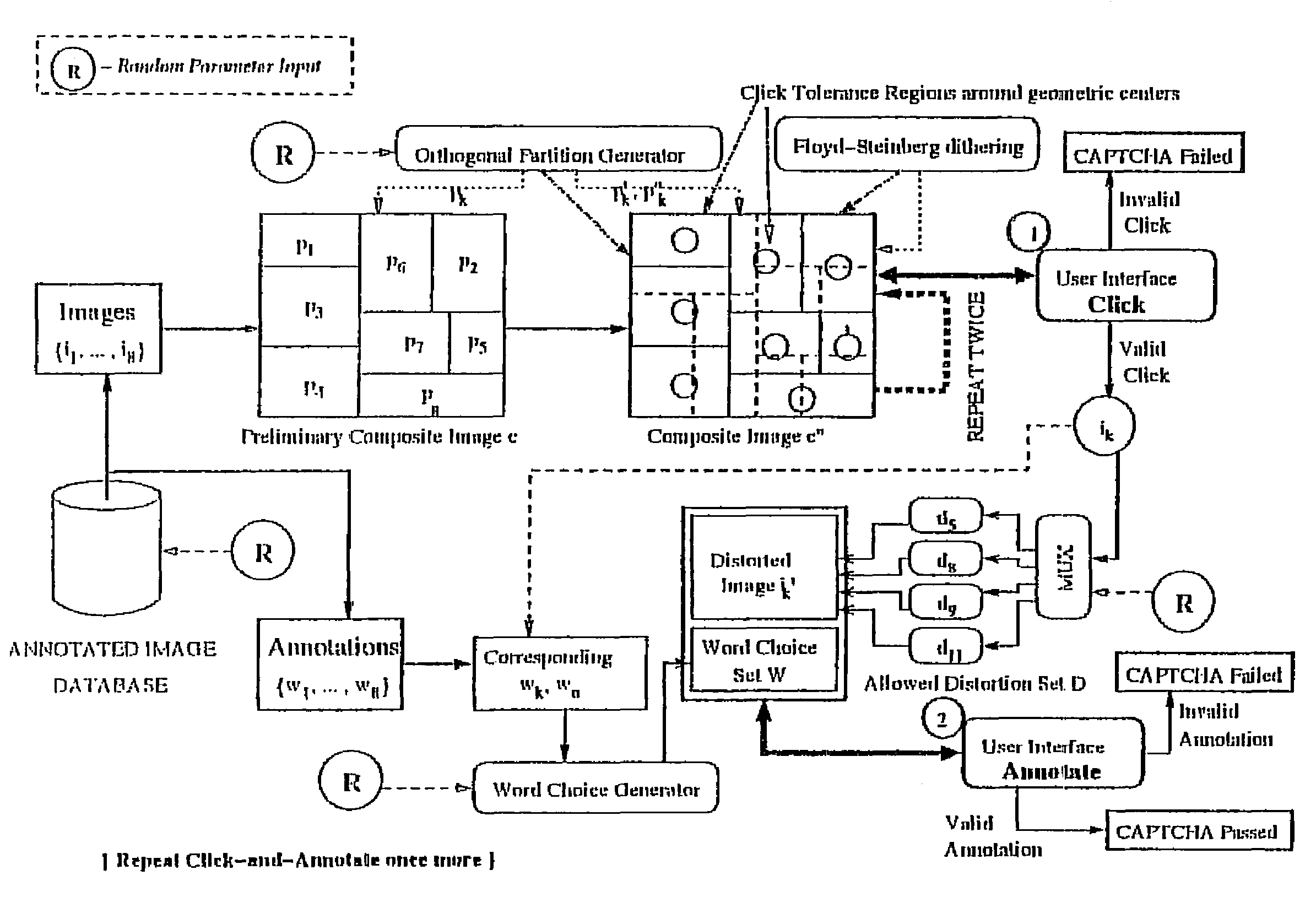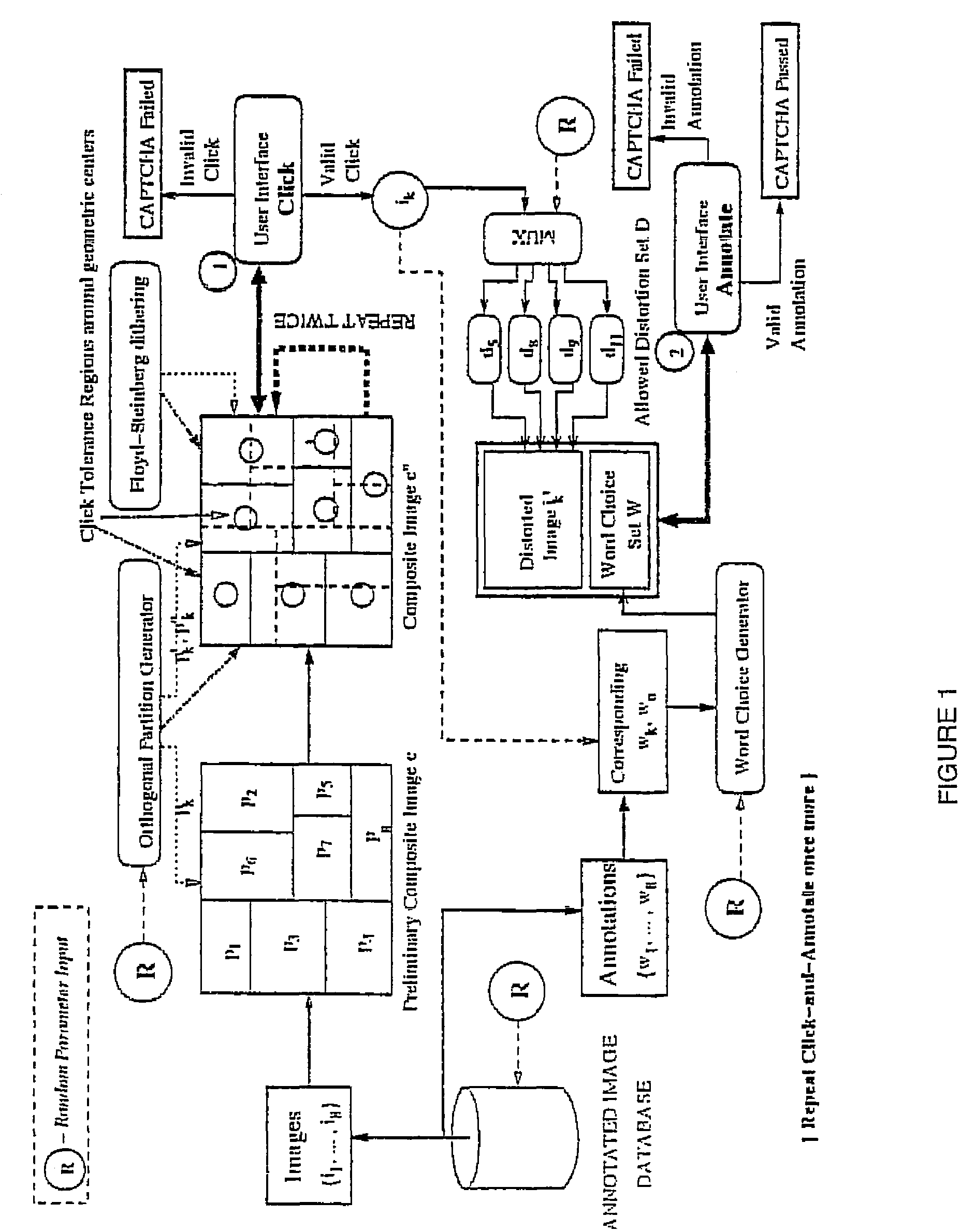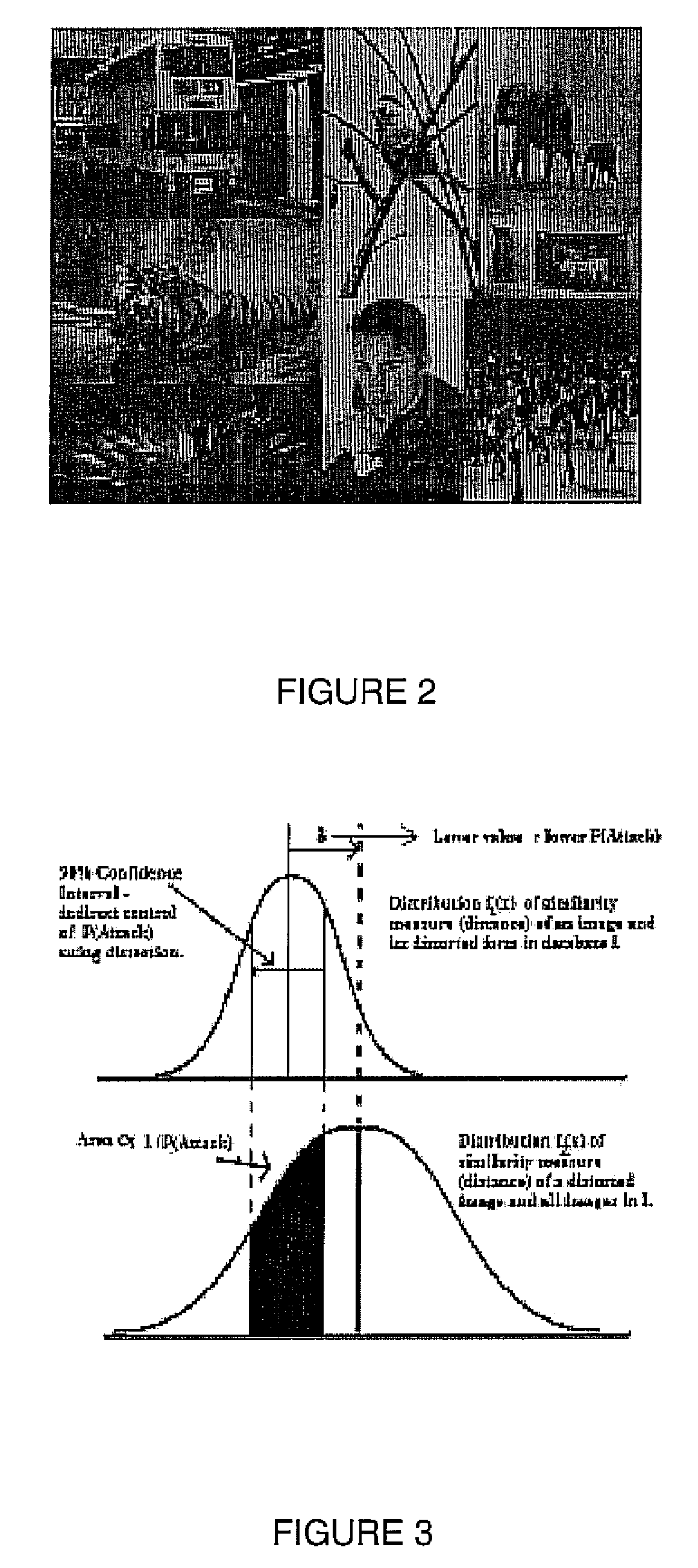Image-based CAPTCHA generation system
a captcha and image technology, applied in the field of captchas, can solve the problems of human speed limitation, on-line voting, and web site attacks by malicious programs, and achieve the effects of avoiding ambiguity, high attack resistance, and user-friendliness
- Summary
- Abstract
- Description
- Claims
- Application Information
AI Technical Summary
Benefits of technology
Problems solved by technology
Method used
Image
Examples
Embodiment Construction
[0015]Given a database of images of simple concepts, a two-step user-interface allows quick testing for humans while being expensive for machines. Controlled composite distortions on the images maintain visual clarity for recognition by humans while making the same difficult for automated systems.
[0016]Requiring the user to type in the annotation may lead to problems like misspelling and polysemy [3]. In our system, we present to the user a set of word choices, and the user must choose the most suitable image descriptor. A problem with generating word choices is that we might end up with, for example, the word “dog” and the word “wolf” in the list, and this may cause ambiguity in labeling. To avoid this problem, we propose a WordNet-based [5] algorithm to generate a semantically non-overlapping set of word choices while preventing odd-one-out attacks using the choices themselves. Because the number of choices are limited, the location of the mouse-click on the composite image acts a...
PUM
 Login to View More
Login to View More Abstract
Description
Claims
Application Information
 Login to View More
Login to View More - R&D
- Intellectual Property
- Life Sciences
- Materials
- Tech Scout
- Unparalleled Data Quality
- Higher Quality Content
- 60% Fewer Hallucinations
Browse by: Latest US Patents, China's latest patents, Technical Efficacy Thesaurus, Application Domain, Technology Topic, Popular Technical Reports.
© 2025 PatSnap. All rights reserved.Legal|Privacy policy|Modern Slavery Act Transparency Statement|Sitemap|About US| Contact US: help@patsnap.com



